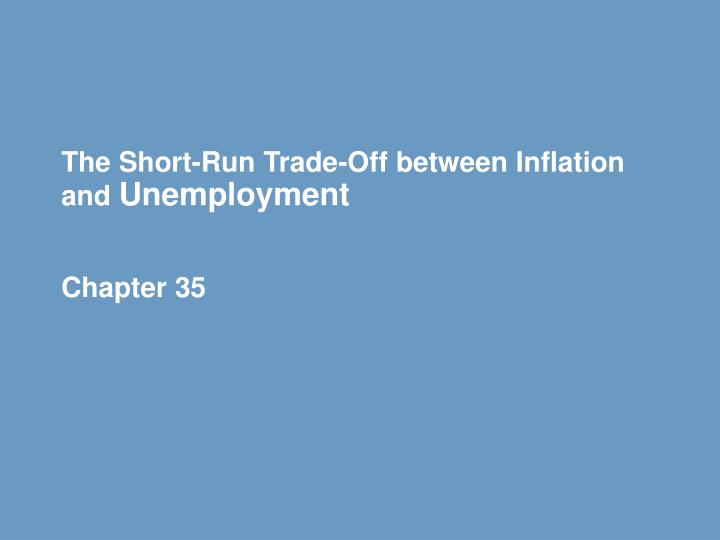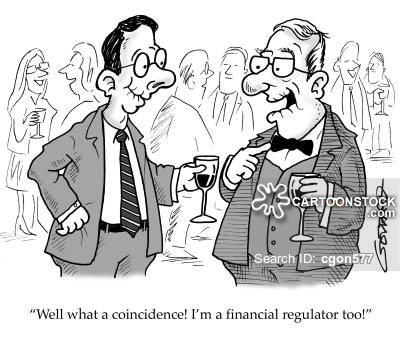Contents:


A price reversal following a doji could last a long time, or only a few periods. Trading doji candlesticks is a constant task of analysis, since each new candle provides information. As you might have noticed, we have observed three patterns instead of one. The doji candlestick patterns differ depending on the type and the current trend.
If the trend witnesses slower growth, then this may be an indication of a shift in investor sentiment. Counterattack strains are two-candle reversal patterns that appear on candlestick charts. In addition, the dragonfly doji may seem within the context of a bigger chart pattern, similar to the top of a head and shoulders pattern. It’s important to look at the whole picture rather than relying on any single candlestick.

Traders would also take a look at other technical indicators to confirm a possible breakdown, such as the relative strength index or the moving average convergence divergence . A gravestone doji is a bearish pattern that suggests a reversal followed by a downtrend in the worth motion. This candlestick has a long upper and lower shadow with both the opening and closing prices near the half-way mark. If this candlestick appears on the chart, one can expect the market to move towards a consolidation phase before breaking out in either direction. This candlestick is usually seen during a strong uptrend or downtrend signalling the reversal may emerge if the bulls / bears start exhibiting exhaustion in near term.
It is formed when a doji forms at the day’s low point or close to it, with a long upper shadow that signals a bearish trend. When it appears at market top it is considered a reversal signal. One such parameter is the ‘dragonfly doji’, a Japanese candlestick pattern which hints at the possibility of a trend reversal. On the candlestick chart it has a ‘T’ shape due to a trading day that starts with a decline and then a reversal to close right near the opening price. A gravestone doji is a bearish reversal candlestick pattern that is formed when the open, low, and closing prices are all near each other with a long upper shadow.
Sign in to read the full article
In the middle of the day’s high and low, the commodity opens and closes. The content on this website is provided for informational purposes only and isn’t intended to constitute professional financial advice. Trading any financial instrument involves a significant risk of loss. Again, the doji is the key candlestick here, showing the moment that momentum began to turn.

So, the candle appearing next to the dragonfly is an essential component of a chart. Dragonfly Doji confirms the presence of sellers early in the market, but the downtrend gets invalidated by strong buying pulls, resulting in same open, high, and closing price. A Doji is a candlestick pattern that resembles a cross as the opening price and the closing prices are equal or almost equal. It reflects indecisiveness in the market hence there is no real body in the candle. The length of the shadows can vary and so the size of the entire candle. According to various shapes and sizes, there are four types of Doji.
Understanding the ‘Hanging Man’ Candlestick Pattern
The initial supply and demand are close together at the high data point when the session ends. At this point in the trading activity, it is not recommended for traders to resume buying. Price reversal is only to the extent that it makes it in time for the daily opening value.
Following the dragonfly, the price proceeds higher on the following candle, confirming the price is moving back to the upside. Traders would buy during or shortly after the confirmation candle. Observe the volume — look for high trading volume, as this can indicate increased market interest and potentially increased volatility. As seen above, the gravestone doji candlestick pattern looks very similar to the shooting star pattern.
E) https://1investing.in/ / Trading in “Options” based on recommendations from unauthorised / unregistered investment advisors and influencers. Below accounts are used for other internal purposes and should not be used to transfer money to Upstox. Curated newsletters on markets, personal finance, policy & politics, start-ups, technology, and more. It may actually imply indecision in the market where neither the bulls nor the bears have any clue about the direction the market or the stock is going to go.
What is a Gravestone Doji?
The dragonfly doji seems like a “T” and it is shaped when the excessive, open and close of the session are all close to the same. The Dragonfly Doji is inverted upside down to make a gravestone Doji design. The opening, low, and close prices are virtually identical, but the high price is significantly higher.
Doji candlestick patterns are single candlesticks that have nearly identical opening and closing prices. These candlesticks may indicate a bullish or bearish trend reversal. A gravestone doji candle is a pattern that technical stock traders use as a signal that a stock price may soon undergo a bearish reversal. This pattern forms when the open, low, and closing prices of an asset are close to each other and have a long upper shadow. The shadow in a candlestick chart is the thin part showing the price action for the day as it differs from high to low prices. The dragonfly doji is a candlestick pattern stock that traders analyze as a signal that a potential reversal in a security’s price is about to occur.
Hence, you are requested to use following client bank accounts only for the purpose of dealings in your trading account with us. The details of these client bank accounts are also displayed by Stock Exchanges on their website under “Know/ Locate your Stock Broker”. Look for a candlestick pattern with a long upper shadow, a small or absent lower shadow, and a tiny or nonexistent real body to detect the Gravestone Doji.
What is Doji candle pattern in crypto and how to trade with it? – CoinGape
What is Doji candle pattern in crypto and how to trade with it?.
Posted: Wed, 15 Feb 2023 08:00:00 GMT [source]
If the immediate dragonfly doji bearish closes on a positive note, then the doji is described as a positive indicator and vice versa. A few analysts said Friday’s fall could just be a single-day affair, but for that to be true the index needs to close above the 14,500 level on Monday, they said. When confirmed, one can be called bullish and the opposite bearish, but sometimes they’ll appear in the reverse situation. According to technical experts, the price accurately reflects all available information about the stock, meaning that it is efficient. However – past price performance does not guarantee future price performance, and a stock’s present price may have little to do with its true or intrinsic worth. As a result, technical analysts employ methods to sift through the noise and identify the greatest wagers.
Traders can now start assuming short positions as the trading sentiment is about to change. A doji is most significant when it is close to an area of resistance or support, or in an overbought or oversold market. Besides, a single doji has more significance when compared to multiple dojis in a trend line.
Dragonfly Doji
Besides, short-term timeframes feature a lot of price noise, confusing traders. This pattern is a significant signal in an uptrend, which warns of bearish activity at the levels reached, so, bullish traders should be prepared to exit trades. The Four career test and career quiz by future proof your career Doji is a pattern that rarely appears on a candlestick chart except in low-volume conditions or very short periods. Notably, it looks like a minus sign, suggesting that all four price indicators are at the same level over a given period.
Top 5 Types of Doji Candlesticks – DailyFX
Top 5 Types of Doji Candlesticks.
Posted: Wed, 22 May 2019 07:00:00 GMT [source]
How you trade a doji depends on the signal your pattern is generating. The most common signal from a doji is a possible impending reversal – after all, they offer a sign of indecision, which tends to precede a change in direction. Four-price doji, on the other hand, may be a sign that liquidity is low. If this is the case, then you might be best off staying out of the market until trading picks up again. Penny stocks with dragonfly doji pattern and upside potential-Your browser does not support the audio element. The fact that Nifty could not defend its immediate support at 14,450 level has made a few analysts turn wary on the recent rally.
The dragonfly doji sample does not occur regularly, but when it does it’s a warning sign that the trend may change direction. Following a worth advance, the dragonfly’s long lower shadow reveals that sellers have been capable of take management for at least part of the period. Estimating the potential reward of a dragonfly trade may also be troublesome since candlestick patterns don’t sometimes present value targets. Other techniques, corresponding to different candlestick patterns, indicators, or methods are required in order to exit the commerce when and if profitable.
Dojis are good for reversals because they present indecision, uncertainty, or vacillation by buyers in an uptrend and sellers in a downtrend. A bullish Doji star and a bearish Doji star are two types of star Doji candlestick patterns. Both arise following an uptrend or fall in an instrument’s price and help to signal different trend orientations.
Furthermore, the pattern’s significance varies depending on the market and time frame studied. If we twine it with a bearish trend like the market has behaved in the recent past it could suggest some stocks that could see an uptick. The Indian stock market has been trying to regain all of the lost momentum and has scaled back after seeing a bottom at about 5% below the peak level attained last month. Dragonfly Doji Trade SetupYou can clearly see the downtrend here. Rajesh Palviya of Axis Securities said Friday’s price action might just be a small pullback. The index continued to move in a higher high-higher low formation on the hourly chart, indicating a positive bias.
However, it is recommended to take a long-term view only after dragonfly doji transforms into a directional candlestick – either bearish and bullish. When a trader can suitably recognize the dragonfly doji position, it prepares the ground to enter and exit the market at the right time. Similar to other candlestick patterns, trading with the Dragonfly Doji is most successful when you are able to see a confirmation in the nearby candles. When it appears in a downtrend, a Dragonfly Doji suggests aggressive selling but also strong buying force to bring the closing price up to the opening price. Conversely, a dragonfly appearing during an uptrend is indicative of possible downward price reversal.
Herein, we can see a long lower shadow exhibiting selling exhaustion. One can gauge a positive reversal if the pattern emerges at the downward trend. If the immediate candle gives a positive close, then the upward move is believed to have a confirmation. After all, if your chosen market is breaking through significant levels in the opposite direction to your predicted price action, chances are your trade has failed.
If enter short after a bearish reversal, a stop loss may be placed above the high of the dragonfly. A Dragonfly Doji is a type of candlestick sample that can sign a possible reversal in price to the draw back or upside, relying on past worth action. Following a downtrend, the dragonfly candlestick may sign a worth rise is forthcoming.
- The information contained in this article is for general purposes only and not a complete disclosure of every material fact.
- The pattern forms when the open and close prices are almost at the same level.
- Update your e-mail and phone number with your stock broker / depository participant and receive OTP directly from depository on your e-mail and/or mobile number to create pledge.
- In addition, the dragonfly doji may seem within the context of a bigger chart pattern, similar to the top of a head and shoulders pattern.
- The exact opposite of a Gravestone doji, a Dragonfly Doji candlestick suggests a bullish view with prices regaining the upward momentum at the end of a session.
Update your e-mail and phone number with your stock broker/depository participant and receive OTP directly from depository on your e-mail and/or mobile number to create pledge. If you are subscribing to an IPO, there is no need to issue a cheque. Please write the Bank account number and sign the IPO application form to authorize your bank to make payment in case of allotment. In case of non allotment the funds will remain in your bank account. In simple terms, such a candle indicates that the bulls and bears are uncertain about the trend. The strength and momentum for both seems to be at par, resulting in the price settling at the equal level.
In financial charts, the Gravestone Doji trend is a bearish reversal trend. It indicates a potential trend reversal when it shows up at the upper side of an uptrend or after a prolonged period of bullish market activity. The pattern is frequently used by traders in conjunction with other candlestick patterns to spot possible entry and exit points for a trade. This candlestick pattern is formed when the market opens, bullish traders try to push prices up whereas the bearish traders reject and push it back down. Some traders believe that the Doji indicates an upcoming price reversal when viewed alongside other candlestick patterns. After a strong uptrend or a downtrend, a Doji formation accompanied with high volumes is a possible sign of reversal.
Notably, the Doji is a bearish signal if the closing price is below the middle of the candle, especially if it is close to resistance levels. Conversely, if the closing price is above the middle of the candle, it is bullish, as the formation resembles a bullish pin bar pattern. Estimating the potential reward of a dragonfly trade can also be difficult since candlestick patterns don’t typically provide price targets. The Gravestone Doji is a candlestick pattern that might appear in financial market analysis. It forms when a trading session open, low, and close are all roughly around the same price level, with quite a long upper shadow and no or little lower shadow.
Two days back b.nifty forms a dragonfly doji candle on daily timeframe, followed by a gap up on the next day, now a small pullback towards the trend line. These indicates some sign of trend reversal going to happen soon. Today FED meeting going to happen, that reaction will reflect on our market tomorrow weekly expiry, so trade carefully. Dragonfly doji bullish reversal pattern is often found at the bottom of downtrends. The dragonfly dojis’ lower shadow is clearly longer, and it has no upper shadow.

Deixar Um Comentário